About Ol Pejeta Bush Camp
Ol Pejeta Bush Camp is a simple but smart bush camp on the banks of the Ewaso Nyiro River in the northern ...
... part of the Ol Pejeta Conservancy, in southern Laikipia. The guiding, service, and food are of the same high standard and the camp is located in a good location for wildlife viewing, including both black and white rhinos.
Ol Pejeta Camp is an authentic yet smart bush camp located in the Ol Pejeta Conservancy. It can offer great flexibility due to its small size and focuses on good food and guiding. Its informal, homely approach doesn’t divorce you from your surroundings and you feel fully immersed in the African bush, making it ideal for seasoned Africa visitors and adventurous travellers.
Our view
Ol Pejeta Camp is an authentic yet smart bush camp located in the Ol Pejeta Conservancy. It can offer great flexibility due to its small size and focuses on good food and guiding. Its informal, homely approach doesn’t divorce you from your surroundings and you feel fully immersed in the African bush, making it ideal for seasoned Africa visitors and adventurous travellers.
Accommodation
Eight tents
Children
Best for children aged 8+
Open
1 Jun to 30 April
Activities

4WD Safari

Birdwatching

Night drive

Private activities
Traveller reviews of Ol Pejeta Bush Camp
11 real, un-edited reviews from Expert Africa's travellers.
Arrived 5 Sep 2024, 3 nights
"Ol Pejeta Bush Camp review"
Overall rating: Excellent
Arrived 6 Jan 2023, 5 nights
"Ol Pejeta Bush Camp review"
Overall rating: Excellent
Arrived 5 Oct 2022, 3 nights
"Ol Pejeta Bush Camp review"
Overall rating: Excellent
Arrived 24 Dec 2021, 2 nights
"Christmas at Ol Pejeta Bush Camp "
Overall rating: Good
Arrived 5 Oct 2020, 4 nights
"Lovely Camp"
Overall rating: Excellent
Arrived 10 Nov 2018, 3 nights
"Ol pejeta Bush camp"
Overall rating: Excellent
Arrived 20 Dec 2017, 4 nights
"Great Safari Camp with Personal Touch"
Overall rating: Excellent
Arrived 30 Jun 2017, 3 nights
"Ol Pejeta Bush Camp: my favourite"
Overall rating: Excellent
Arrived 28 Oct 2016, 2 nights
"OPBC Review"
Overall rating: Excellent
Arrived 22 Feb 2016, 2 nights
"Ol Pejeta Bush Camp review"
Overall rating: Excellent





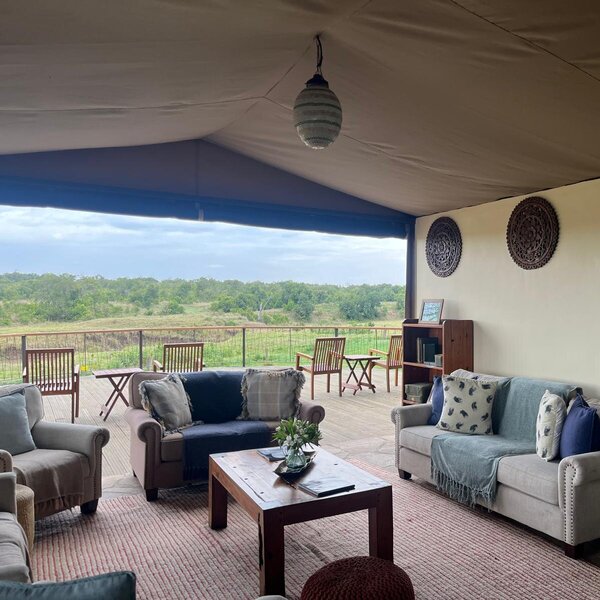

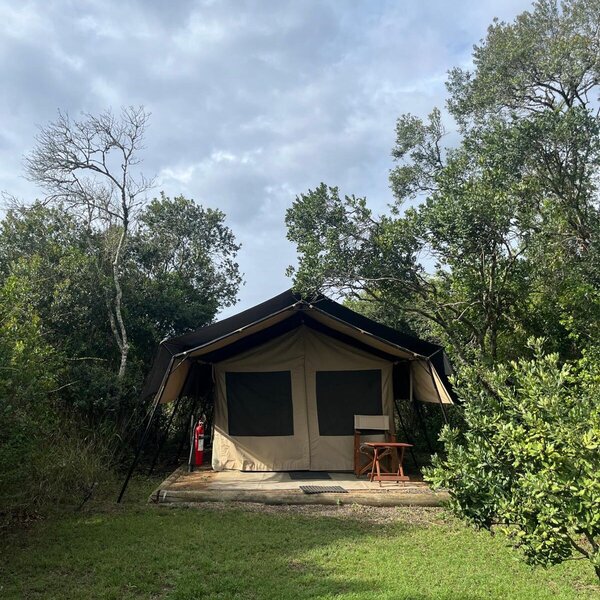
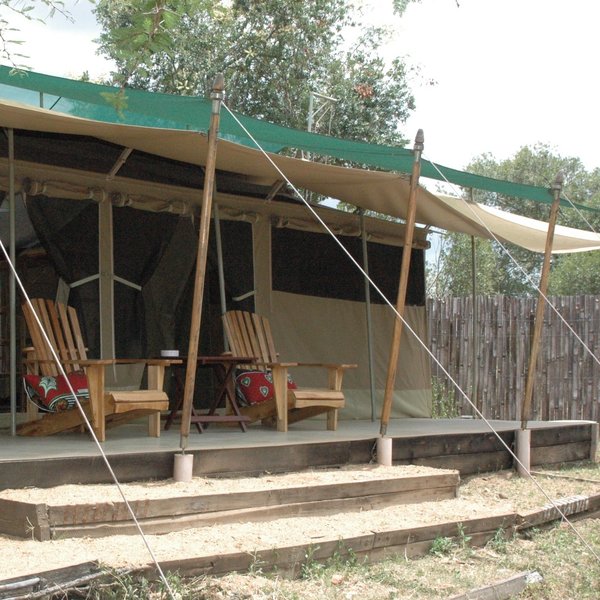


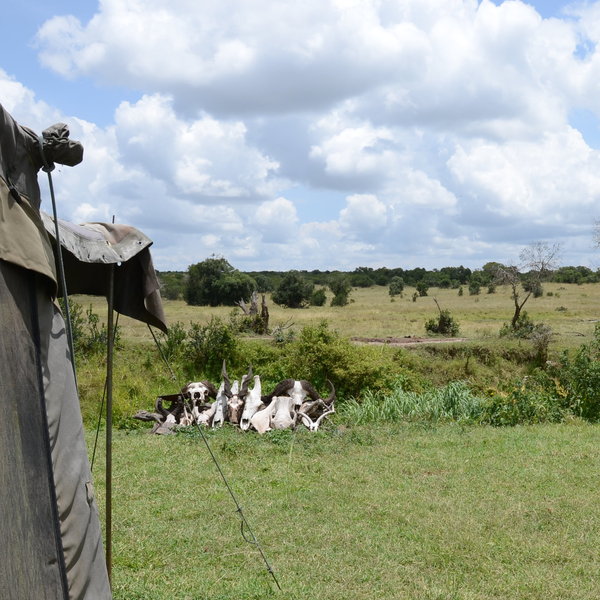











Expert Africa's gallery
When we travel we take lots of photos ourselves to give you a real and un-edited view of the safaris. See our 35 pictures and 1 videos of Ol Pejeta Bush Camp to get the candid view.
View gallerySafaris visiting Ol Pejeta Bush Camp
Just ideas, we'll always tailor-make a trip for you
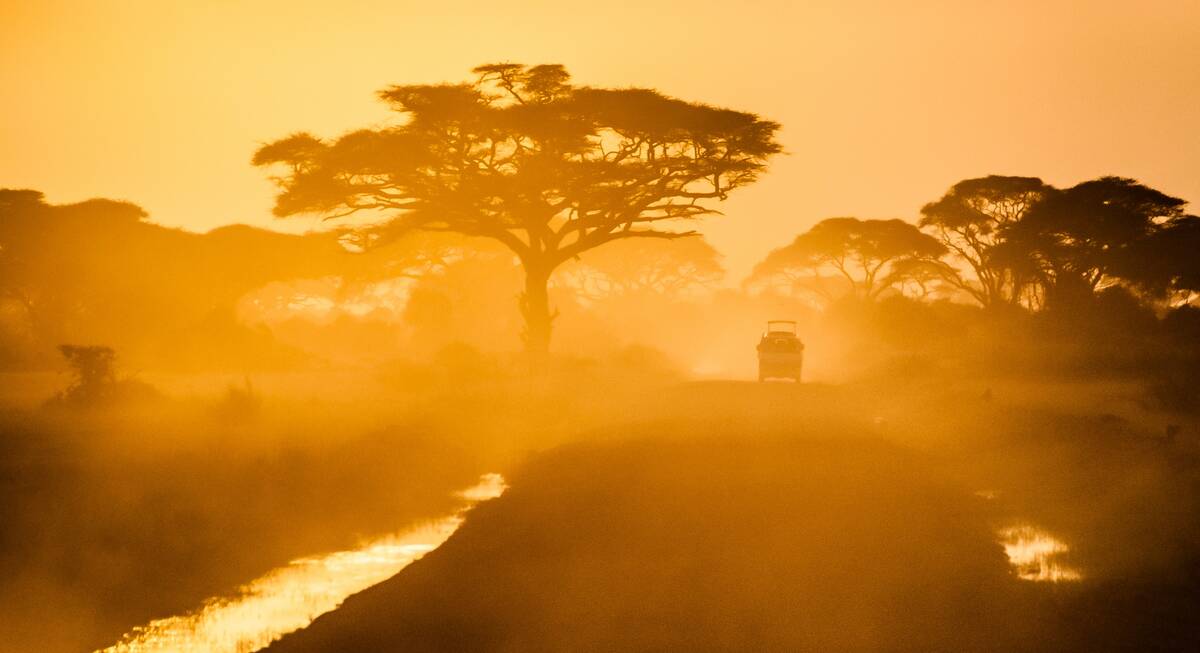
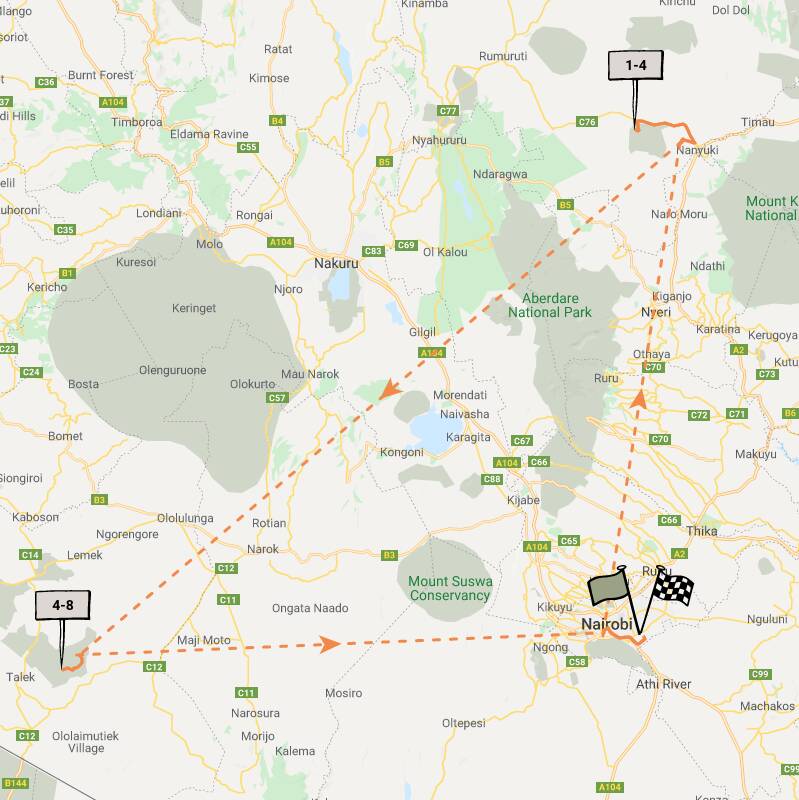
Tawny Eagle Fly-in Safari
7 days • 2 locations • 1 country
NAIROBI AIRPORT TO NAIROBI AIRPORT
Explore Laikipia and the Maasai Mara ecosystem with stays in the Ol Pejeta and Naboisho conservancies. Two smart yet authentically rustic bush camps provide a traditional safari experience, offering a high standard of guiding and excellent level of care.
Visiting Laikipia, Mara Conservancies
US$6,550 - US$8,630 per person
Ol Pejeta Bush Camp: Our full report
Ol Pejeta Bush Camp is a simple but smart bush camp on the banks of the Ewaso Nyiro River in the northern ...
... part of the Ol Pejeta Conservancy, in southern Laikipia. The guiding, service, and food are of the same high standard and the camp is located in a good location for wildlife viewing, including both black and white rhinos.
The central area at Ol Pejeta Bush Camp was built in 2016 and is a large, tan, concrete structure that is raised on a concrete base, a couple of meters off the floor, in case the river was to ever burst its banks. The building is open fronted, and all of the windows have canvas blinds that usually have the sides rolled up to let the breeze pass through and also allow guests to take in the views of the river. The comfortable lounge is tucked around a corner decorated with small sofas, armchairs, director's chairs, and big floor poufs to sit on, while traditional woven kikois are draped around to add a touch of colour and rugs are strewn around to soften the concrete floors. Numerous coffee-table books are placed on tables, that surround a roaring log fireplace, to create a homely feel. In the centre of the main area is a large communal dining table and on the other side is a bar and two guest toilets. Another seating area overlooks the Ewaso Nyiro River and a salt lick beyond with an extended decking allowing for dinner beneath the stars or drinks around the firepit. On our recent visit, we spent some time here watching a large herd of elephants across the river enjoying themselves beside the water. On cool nights the tent's side panels are closed to create a cosy dinner party-style atmosphere.
The eight desert brown safari tents, including one large family tent, are dotted throughout the nearby bush. All are spacious and set quite a distance apart from each other, but the thick vegetation in between and rustic dividing fences makes each tent feel really private.
Each tent's veranda features a small table and two chairs with cushions, with views of the river. The main bedroom, accessed via canvas flaps on the side, is of a comfortable size and is simply decorated. The tents suit people who are not after a room with lots of frills, but want it to be comfortable, spacious, clean, and of good quality. Each has a canvas floor with a couple of rugs, a large bed with bedside tables, and shelving to store and hang clothing. Solar power lights the rooms, and there are plugs for you to charge your batteries.
The fully-plumbed en-suite bathroom is located through a canvas flap behind the bedroom. This includes a double basin on a simple wooden stand and two separate canvas cubicles – one is the shower, and the other is a flush toilet. Hot water is available 24/7.
Activities focus on safari drives in 4WD vehicles in the Ol Pejeta Conservancy. Most activities are led by experienced guides – many of whom come from the local community. As of 2021, walking safaris, as an alternative activity to game drives, are currently not being offered from Ol Pejeta Bush Camp while the nearby bush is very dense and extra firearm protection would be required. Check with your Expert Africa specialist to see if bush walks have been resumed.
Visits to the Sweetwaters Chimpanzee refuge, and the Northern White Rhino Sanctuary, home to the last two remaining individuals of this subspecies in the world, are also possible. Visits to the latter offer a wealth of insight into the surrogacy and insemination efforts underway to protect this subspecies from extinction, great photo opportunities, and are best booked in advance due to limited daily visitor numbers, so do ask us about it.
For those who want to relax in camp, there is also the chance to view game at the salt lick on the opposite bank of the river. It often brings in rhinos at night, which causes great excitement.
Activities
4WD Safari
Birdwatching
Night drive
Private activities
Families & children
- Attitude towards children
- Ol Pejeta Bush Camp is happy to have children in the camp.
- Property’s age restrictions
- 5+.
- Special activities & services
- Ol Pejeta can do short tracking activities around the camp and other activities focused on engaging children.
- Equipment
- They don’t have any special equipment for children in camp, but can borrow it if required.
- Generally recommended for children
- The relaxed nature of this camp makes it a great spot for families, but it is also quite wild and rustic. We think it is best suited to families with older children who are aware of their surroundings.
- Notes
- Ol Pejeta Bush Camp has a very discrete electric fence on three sides and the Ewaso Nyiro River on the fourth, with an electric fence beyond. The primary aim of this is to keep elephants out to help tree rehabilitation, but it also means that you are less likely to get these big animals coming through camp. That said, it doesn’t stop all dangerous animals and buffalo sometimes come into camp, meaning children cannot walk unaccompanied in camp during the day or night. Parents must keep a close eye on their children at all times.
Food & drink
- Usual board basis
- Full Board & Activities
- Food quality
- During our last visit, the food at Ol Pejeta Bush Camp was very tasty and we enjoyed the communal dining.
Breakfast is either taken as a picnic, with cereals, fresh breads, boiled eggs, cold sausage, and bacon, or back in camp where there is a greater selection, including a selection of pastries, yoghurt, and a full cooked English breakfast to order with tea and coffee.
Lunch is buffet-style and, during our visit, included tasty butternut and leek ravioli, beetroot salad, green salad with avocado, and tempura fried vegetables. Dessert was a fresh melon salad.
Dinner is a more formal meal, with three set courses served to the table. When we stayed, we started with delicious butternut and ginger soup, followed by stuffed chicken breast served with cauliflower, broccoli, and cheese-stuffed potatoes. This was finished off with apple doughnuts served with custard.
Like the camp, the food is unfussy and hearty and uses good fresh ingredients. - Dining style
- Group Meals
- Dining locations
- Indoor and Outdoor Dining
- Further dining info, including room service
- Group Meals - unless requested otherwise.
Ol Pejeta Bush Camp can be very flexible on room service, but there are no phones in the rooms so it has to be arranged in advance. - Drinks included
- All drinks are included at Ol Pejeta Bush Camp, except Champagne and specially imported wines and spirits.
Our travellers’ wildlife sightings from Ol Pejeta Bush Camp
Since mid-2018, many of our travellers who stayed at Ol Pejeta Bush Camp have kindly recorded their wildlife sightings and shared them with us. The results are below. Click an animal to see more, and here to see more on our methodology.

100% success

100% success

100% success

100% success

100% success

100% success

100% success

100% success

100% success

86% success

71% success

43% success

43% success

14% success

0% success

0% success
Getting there
- Location
- Laikipia, Kenya
- Ideal length of stay
- 3–4 nights would be ideal here.
- Directions
- To reach Ol Pejeta Bush Camp, there is an hour’s flight from Nairobi to Nanyuki, then it is another hour’s drive to the camp. The town of Nanyuki is 30kms away.
- Accessible by
- Fly-and-Transfer
Special interests
- Solo safaris
- Ol Pejeta doesn’t apply a single supplement outside of high season, so this camp is great value for a solo traveller looking for a range of activities and wildlife in the Laikipia region – where camps tend to be costlier than the average across Kenya.
- See ideas for Solo safaris in Kenya
Sustainability

Fighting to save the last remaining white rhinos
Situated within Ol Pejeta Conservancy, Ol Pejeta Bush Camp makes up an ideal base for getting involved in game-changing conservation efforts whilst exploring an area hiding some of Kenia’s highest densities of wildlife. Perhaps the most meaningful contribution of the bush camp is the extraordinary support it provides to Ol Pejeta Conservancy for its rhino conservation efforts.
With over 100 critically endangered black rhinos, the conservancy is home to the largest black rhino sanctuary in East Africa. Providing access to the sanctuary, Ol Pejeta’s guests can observe the rhinos, and in exchange financially support the conservancy’s dedicated employees, who monitor and protect rhinos on a 24h basis.
Tourists therefore play a central role in supporting Ol Pejeta Conservancy’s projects, and especially the last two remaining Northern white rhinos in the entire world. Visitors are invited to donate in memory of Sudan, the last male white rhino who unfortunately passed away in May, 2018. Donations are essential for supporting IVF research, and hopefully get these animals one step away from extinction, and one stop closer to being able to roam freely in their natural habitat. In exchange, Ol Pejeta Bush Camp offers visitors exclusive access to the Northern white rhino sanctuary, which make for a unique chance to learn about what makes Ol Pejeta one of the leading examples of modern day rhino conservation.
So far £47,805 has been raised for supporting research. Bush Camp plans to remain an active supporter through educating tourists and spreading the word about the fundraiser, thus contributing to the goal of reaching £9.0M for saving a species in the brink of extinction because of humans’ irresponsibility.
See more great sustainability projects in Kenya
Communications
- Power supply notes
- There is 24 hour electricity in camp and guests can also charge their batteries in the tents.
- Communications
- Ol Pejeta Bush Camp offers Wi-Fi throughout the camp, however, the phone signal is intermittent and unreliable. There probably isn't enough signal to make a phone call, unless you drive 100m out of camp, but it usually allows text messages to be sent. The camp has a radio for emergencies.
- TV & radio
- No TV.
- Water supply
- Borehole
- Water supply notes
- A borehole supplies water for washing, laundry and showers, while 18-litre drinking water barrels are distributed into flasks for guests' tents. Hot showers and running water are available 24/7.
Health & safety
- Malarial protection recommended
- Yes
- Medical care
- Ol Pejeta Camp has first-aid equipment in camp and six members of staff have done first aid courses. All vehicles have basic kits too. The trusted Nanyuki Cottage Hospital is less than an hour away. The camp has links to flying doctors for more serious emergencies.
- Dangerous animals
- High Risk
- Security measures
- Ol Pejeta Bush Camp policy is to escort guests around the camp at night.
- Fire safety
- There are fire extinguishers dotted around the camp and the river in front acts as a natural firebreak. The six staff who did first-aid training also did fire-training at the same time.
Useful info
- Disabled access
- On Request
- Laundry facilities
- Laundry is included at Ol Pejeta Bush Camp. It is hand washed, line dried and coal ironed, so it is best to avoid anything too delicate. The team doesn’t wash ladies underwear, but soap powder is provided in the rooms.
- Money
- Ol Pejeta Bush Camp can exchange small amounts out of cash, but no more than about GB£100/US$150. There are safes in all of the rooms and the central office.
- Accepted payment on location
- Ol Pejeta Bush Camp accepts cash and cards.
Plan and book your trip with Expert Africa
All of our trips are tailor-made, so we'll always adapt them to suit you. Talk to an Expert and let us plan and arrange your perfect trip.

Talk to an Expert
Call or email us now! We’ll match you with the Specialist in our team who is best suited to help you. Then together we can start planning your trip.

Set up your itinerary
Based on our experience and your ideas, your specialist will create a detailed, costed itinerary. We’ll refine it together, until we have a trip that you’re perfectly happy with.

Prepare for your trip
The same Specialist will make the seamless arrangements for your trip, send you detailed travel documents, and be available to answer any questions before you depart.

Travel with peace of mind
After you set off, you’ll be cared for by our partners in Africa, most of whom have worked with Expert Africa for decades. And if you ever need us urgently, we’re available 24/7.

When you return
We love to learn about your trip, and so will always be grateful if you’ve the time to give feedback to your Specialist when you return.
Ol Pejeta Bush Camp's location
Look closer at the environment and surroundings of Ol Pejeta Bush Camp.
Excursions from Ol Pejeta Bush Camp
Optional extra day-trips and excursions possible whilst you're staying at Ol Pejeta Bush Camp. Talk to us: these are usually best arranged before you go.

Anti-poaching Dogs Display
Approx. one hour
Interact with the dog keepers and learn about what it takes to look after the specially trained canine team. Guests are encouraged to try and evade the sniffer dogs, not only is this great fun, but it helps to offer genuine training for the dogs.
More about Anti-poaching Dogs Display
Northern White Rhinos visit
One hour, usually as part of your drive
Visit the Endangered Species Enclosure at Ol Pejeta Conservancy for a close encounter with the last two remaining northern white rhinos. You can visit either by game drive vehicle or visit on horseback if you're an experienced rider. Other rare species include Jackson's hartebeests and Grevy's zebras.
More about Northern White RhinosOther lodges in Laikipia
Alternative places to stay in this same area.

Kicheche Laikipia
Kicheche Laikipia is the most luxurious tented camp of the handful of places to stay in the Ol Pejeta Conservancy in central Laikipia.

Laikipia Wilderness
Laikipia Wilderness is a rustic owner-managed bush camp, in excellent wild dog territory, offering outstanding guiding.

Lewa Safari Camp
Lewa Safari Camp is a comfortable and homely tented lodge, located in the Lewa Conservancy and offering a relatively exclusive safari away from mass tourism.

Lewa Wilderness
Lewa Wilderness is a comfortable, fenced safari lodge with nine cottages, great views and a huge range of activities.

El Karama Lodge
El Karama is a comfortably rustic, very personal, riverside eco-lodge on a game-rich private ranch in Laikipia, an hour’s drive north of Nanyuki airport.

Sosian
Sosian Lodge is a distinctive, estancia-style ranch house on a former cattle ranch, with great opportunities for riding, relaxing and seeing wild dogs and other savannah wildlife.

Il Ngwesi Eco-Lodge
The community-owned Il Ngwesi Eco-Lodge sits atop a small hill in the remote Il Ngwesi Group Ranch, a two-hour drive north of Lewa Conservancy in north-eastern Laikipia.

Porini Rhino Camp
Porini Rhino Camp is a small, simple, well established tented camp, with a keen focus on sustainable and low-impact tourism.

Borana
Borana is a comfortable and striking lodge on the Borana Conservancy in eastern Laikipia, offering pleasant accommodation with good food and service and a very wide range of activities.

Sirikoi
Sirikoi is a small, very high-quality safari camp with excellent service and food and a wide selection of activities.

Kifaru House
Kifaru House is a small, stylish safari lodge in the Lewa Conservancy, with beautiful views across the landscape.

Lewa House
Lewa House is a very comfortable, boutique safari lodge located on the Lewa Conservancy, north of Mount Kenya.

Solio Lodge
Solio Lodge is an exclusive and luxurious bush lodge set in the private Solio Game Ranch in southern Laikipia.
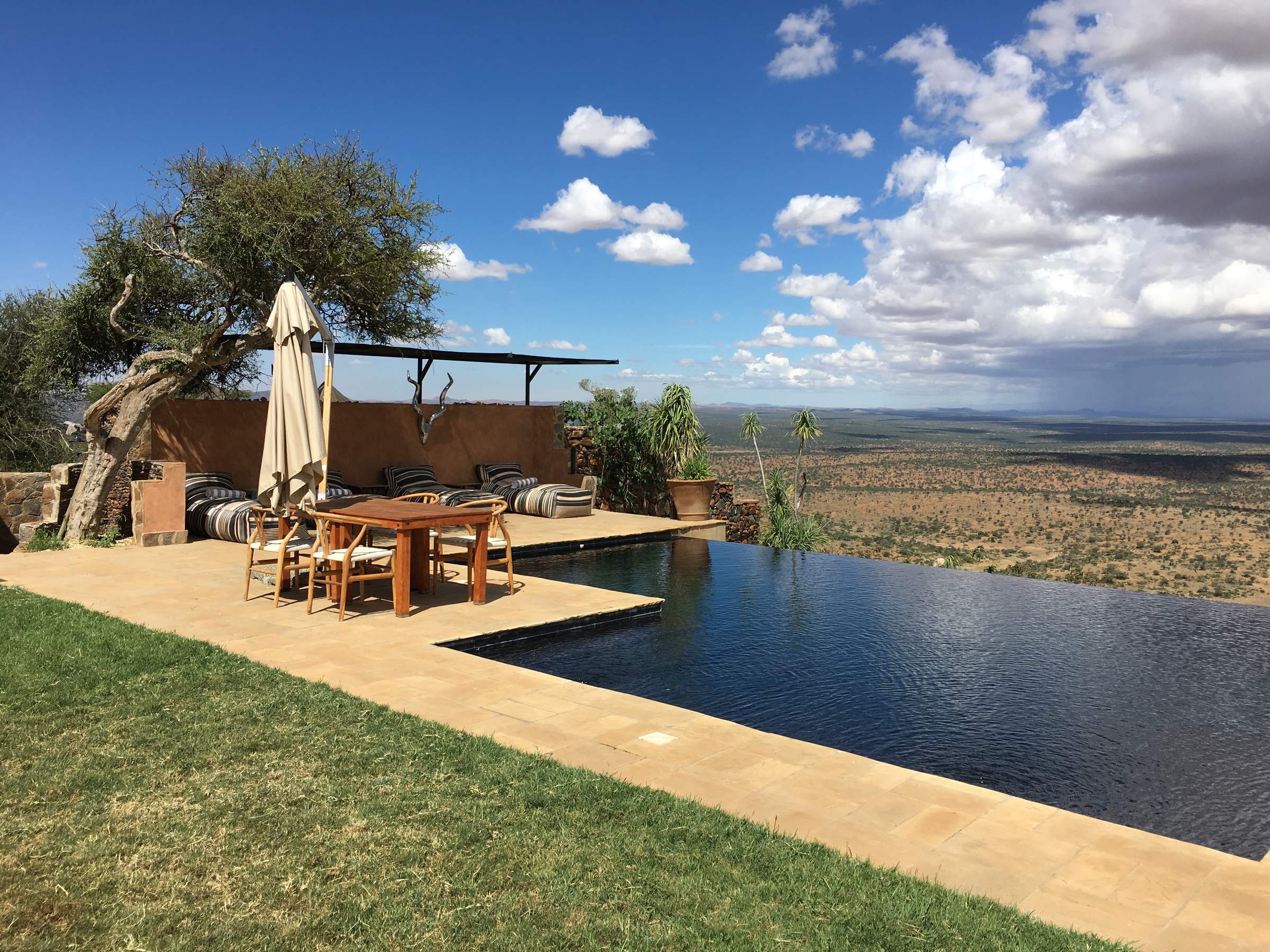
Loisaba Tented Camp
Loisaba Tented Camp is a luxury safari base of tented rooms, ranged along a ridge in the Loisaba Conservancy, facing Mount Kenya. The camp was completely rebuilt in 2016.

Tassia Lodge
Tassia offers a unique wilderness experience in a remote location: come here for cultural interaction, stunning views and something a bit different.

Loisaba Star Beds
Loisaba Starbeds is a simple camp of 4 rooms with pull-out, open-air 'star beds', located near a dam in the Loisaba Conservancy, in northwestern Laikipia.
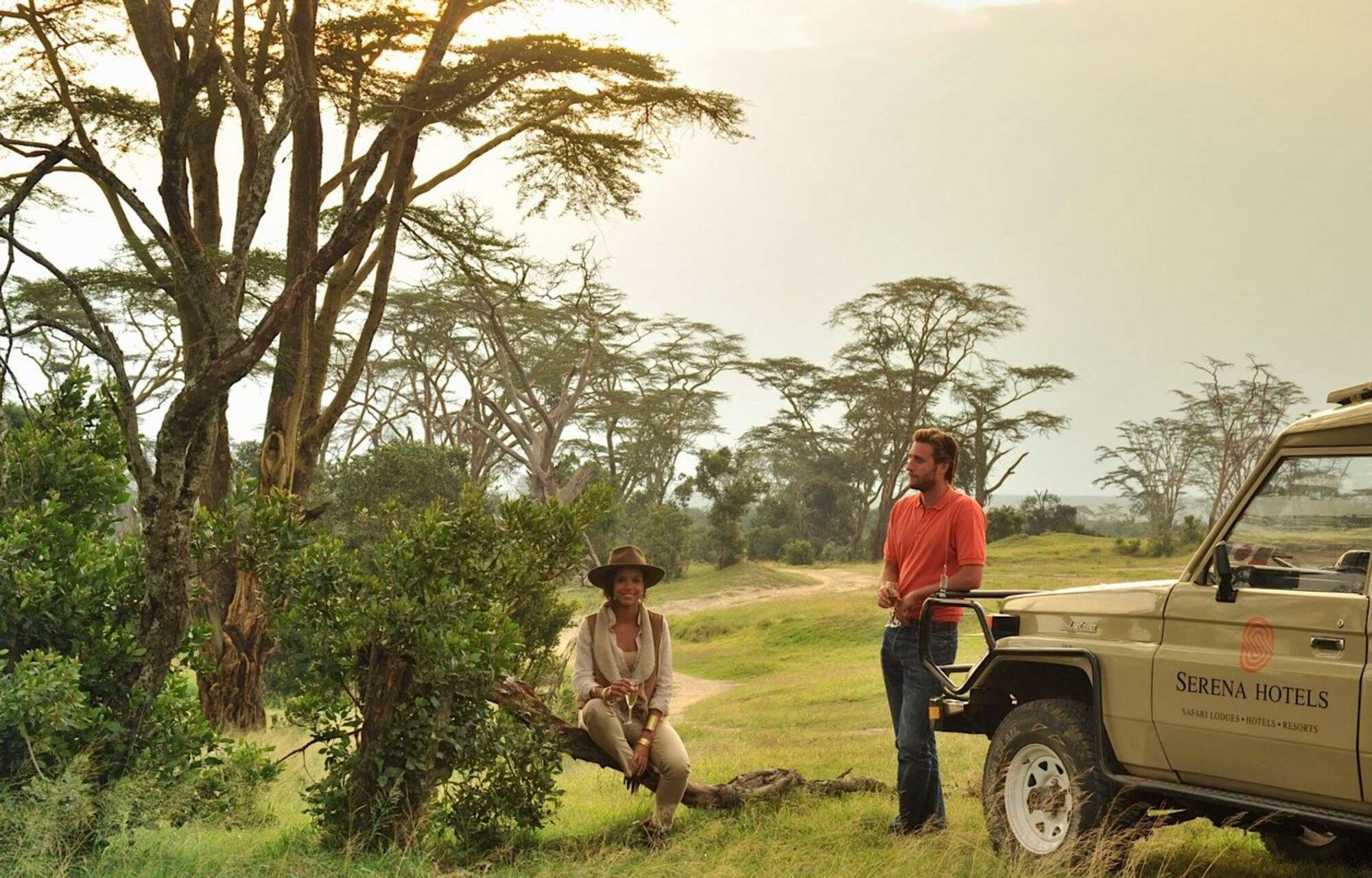
Sweetwaters Serena
Sweetwaters Serena is a large, older tented camp – the largest camp in the Laikipia region – in the eastern part of the Ol Pejeta Conservancy.

Karisia Walking Safaris
Karisia Walking Safaris operates camel assisted, multi-day walking safaris from its main camp, Tumaren, set in a remote part of Laikipia.
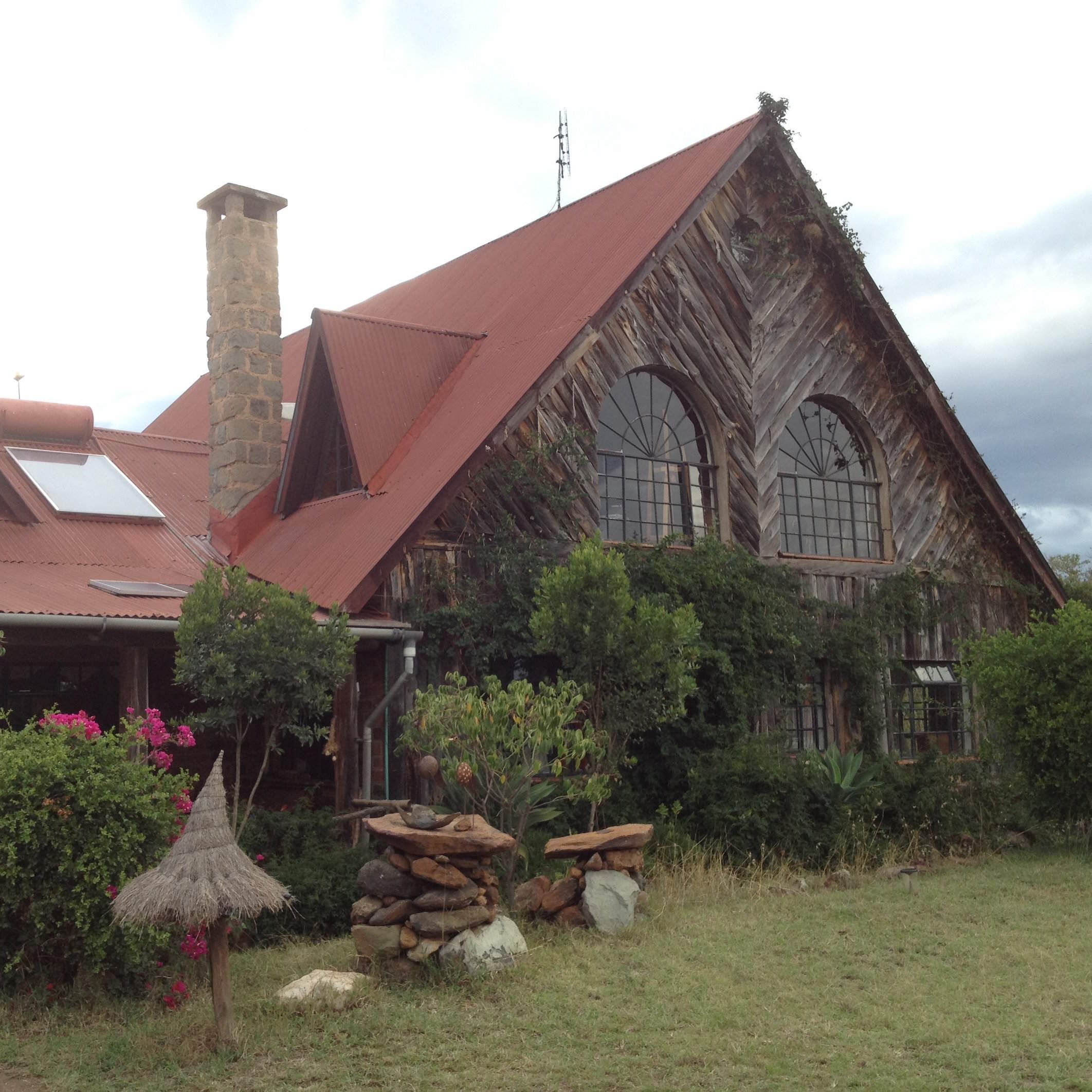
Sandai
Sandai is a pretty, owner-run homestay, set between the Aberdare Range and Mount Kenya, offering a range of activities at extra cost.

Lodo Springs
Lodo Springs is a spectacularly located luxury lodge in a remote spot in the Loisaba Conservancy, sister lodge to Loisaba Tented Camp and Loisaba Star Beds.

Sanctuary at Ol Lentille
The Sanctuary at Ol Lentille is an unusual safari lodge in northern Laikipia, consisting of three exclusive villas, and offering a huge range of activities.
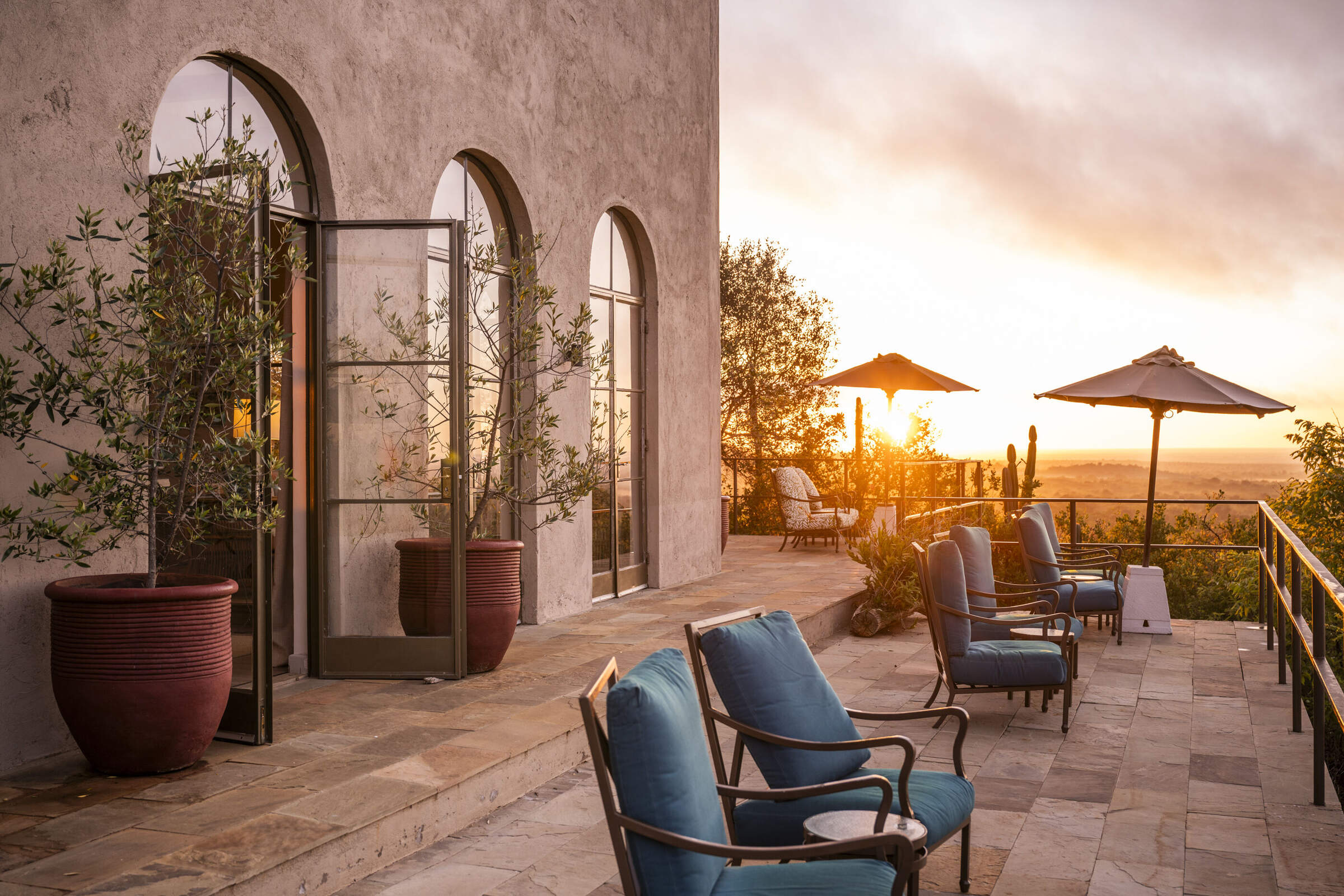
Governors' Mugie House
Governors' Mugie House – a substantial, luxury safari lodge – is one of only two properties in the Mugie Conservancy in northwestern Laikipia.

Thomsons Falls Lodge
Thomsons Falls Lodge is a simple hotel dating back to the colonial era, located above the falls of the same name, near the western Laikipia town of Nyahururu.

Ekorian's Mugie Camp
Ekorian's Mugie Camp is a pleasant, family-friendly safari camp in a remote location in northwestern Laikipia.
When to go to Laikipia
Our month by month guide: What it's like to visit Ol Pejeta Bush Camp in Laikipia
Jan
Feb
Mar
Apr
May
Jun
Jul
Aug
Sep
Oct
Nov
Dec
Laikipia in January
Clear, warm days and mild nights make this a popular time for safaris in Laikipia. It's excellent for game viewing in all the conservancies, where water sources attract diverse wildlife. The dry conditions make it easier to spot black rhinos, lions and leopards. Star bed sleep-out options at a number of lodges are particularly magical under the clear night skies.
After the New Year period, many camps and lodges treat January as mid-season, offering good value. The landscape retains some greenery, enhancing photography.
- Clear days ideal for safaris
- Excellent visibility for wildlife viewing
- Dry riverbeds attract wildlife to water sources
- Calving season for wildebeest and antelopes
- Palearctic migrant birds abundant
Our view
Fantastic: the very best time to visit
Weather in January
Laikipia in February
With the short dry season well established in Laikipia, wildlife gathers close to water points, making it an excellent time for safaris. Ol Pejeta and Lewa Wildlife Conservancies offer prime viewing opportunities for endangered species like black rhinos and Grevy's zebras. Solio Rhino Conservancy provides exceptional black rhino sightings during this period. The grass is grazed down, improving visibility across the region.
February is ideal for walking safaris, where you can appreciate the smaller details of the ecosystem. The clear skies make stargazing from star beds an unforgettable experience. Cultural visits to local communities are particularly rewarding, as the pleasant weather encourages outdoor activities and interactions.
- Prime time for wildlife gathering near water
- Ideal conditions for walking safaris
- Palearctic migrant birds still present
- Low rainfall makes game drives rewarding
Our view
A very good time to visit
Weather in February
Laikipia in March
As March progresses in Laikipia, the weather becomes increasingly hot and humid with more rain likely later in the month. Through most of the month, conditions are still good for game drives in most districts. As the month advances, the buildup to the rainy season becomes apparent.
This period can offer unique photographic opportunities as animals congregate around diminishing water sources. Accommodation costs decrease as the low season approaches.
- Early month offers great wildlife viewing
- Hot weather transitions to occasional rains
- Lower visitor numbers
- Lush vegetation begins to appear
Our view
A good time to visit, with pros & cons
Weather in March
Laikipia in April
April usually sees established, serious rainfall in much of Laikipia, transforming the landscape. The southeast monsoon wind brings cooler temperatures and frequent downpours. While game viewing can be challenging due to lush vegetation, the green season offers unique experiences, with new-born animals visible among the verdant scenery.
The landscape bursts into life with vibrant colours, ideal for photography. Birdwatching is excellent with many species breeding. This is a quieter time for tourism, with lower accommodation rates at many places allowing for a more exclusive safari experience for great levels of service.
- Long rains begin, transforming landscapes
- Green season offers unique photo opportunities
- Lower rates at Laikipia's luxury lodges
- Buffalo and zebra calving season commences
- Birdwatching excellent
Our view
A good time to visit, with pros & cons
Weather in April
Laikipia in May
May in Laikipia is characterised by ongoing rains and lush vegetation. While game viewing can be trickier, the vibrant landscapes offer spectacular photographic opportunities with very little dust. The landscapes are a sea of green, with diverse and thriving flora.
This is an excellent time for birdwatching across the region as breeding season continues. The Ewaso Nyiro river swells impressively. Despite potential challenges, patient visitors may witness dramatic scenes of predators hunting in the thick vegetation.
- Lush vegetation makes wildlife spotting trickier
- Great for landscape and nature photography
- Rutting season for wildebeest and impalas
- Frog breeding season in Laikipia's wetlands
- Mount Kenya views improve with clearer air
Our view
A good time to visit, with pros & cons
Weather in May
Laikipia in June
As June progresses in Laikipia, the rains give way to slightly cooler, cloudy weather. This transition marks the beginning of a long, generally dry, high season for visitors. Game viewing improves as vegetation starts to thin, and conditions are comfortable.
The Ewaso Nyiro river, still full from the rains, attracts diverse wildlife. Accommodation rates begin to rise, reflecting the start of peak season.
- Rains subside, ushering in cooler weather
- High season begins with increased visitors
- Comfortable conditions game viewing
Our view
A good time to visit, with pros & cons
Weather in June
Laikipia in July
July in Laikipia brings cooler temperatures and ideal conditions for safaris. Animals concentrate around water sources on the conservancies, providing excellent game viewing opportunities.
July marks the peak of the high season, with higher accommodation rates and visitor numbers. The dry conditions make it easier to spot elusive species like leopards and black rhinos.
- Cool weather perfect for walking and riding
- Wildlife concentrates around water sources
- Excellent conditions for photography tours
Our view
A good time to visit, with pros & cons
Weather in July
Laikipia in August
August in Laikipia offers mild, dry weather, perfect for safaris. The conservancies teem with wildlife, including endangered species like black rhinos and Grevy's zebras. The landscapes offer stunning vistas and excellent conditions for game drives and walking safaris. The dry conditions make it easier to spot big cats across the region. This is peak season, so expect higher visitor numbers and accommodation rates.
You might consider combining your Laikipia safari with a stay at the nearby Samburu National Reserve, known for its “northern five” species – Grevy’s zebra, reticulated giraffe, beisa oryx, gerenuk and Somali ostrich.
- Peak season for wildlife viewing in Laikipia
- Mild weather ideal for outdoor activities
- Busy period requires advance bookings
Our view
A good time to visit, with pros & cons
Weather in August
Laikipia in September
As September progresses in Laikipia, the weather typically remains dry with clearing skies, signalling excellent safari conditions. Early September can be busy, but visitor numbers decrease later in the month. In the conservancies, game viewing is exceptional as animals congregate around limited water sources.
September generally offers excellent conditions for photography.
- Hot, dry weather with good visibility
- Quieter period for more exclusive safaris
- Natural bush fires flush out insects and small animals for predators
Our view
Fantastic: the very best time to visit
Weather in September
Laikipia in October
October in Laikipia brings generally hot and mostly dry conditions, ideal for safaris. It's a favourite month for many visitors due to the good weather and fewer visitors. The conservancies offer excellent game viewing, with animals concentrated around water sources. The Solio Rhino Conservancy provides exceptional rhino sightings in the dry conditions.
Birdwatching is rewarding as Palearctic migrants begin to arrive. Cultural visits to Maasai communities remain a highlight. Consider combining your Laikipia safari with a trip to the nearby Samburu National Reserve for a diverse wildlife experience.
- Warm or hot and mostly dry conditions for safaris
- Migratory birds start arriving
- Perfect for photography
Our view
A very good time to visit
Weather in October
Laikipia in November
November in Laikipia marks the beginning of the short rains, usually in the latter half of the month. This transition brings about dramatic changes in the landscape. Early November can still offer good game viewing before the rains intensify. Then the bush begins to green, creating beautiful scenery.
As the low season begins, accommodation rates decrease, and visitor numbers drop too, allowing for a more exclusive safari experience. Birdwatching becomes excellent with the arrival of many migratory species. November is ideal for photographers capturing the changing landscapes and dramatic skies, with low dust and clear air. Cultural visits to Maasai communities offer insights into how local life adapts to the changing seasons.
- Short rains begin, transforming landscapes
- Low season offers better rates and privacy
- Excellent time for birdwatching in Laikipia
- Lush scenery provides stunning backdrops
Our view
A good time to visit, with pros & cons
Weather in November
Laikipia in December
In a typical December, Laikipia sees the short rains finish by mid-month, leaving the landscape at its most beautiful. Clear blue skies return, heralding the start of the second peak visitor season from around 20 December onwards. The conservancies offer excellent game viewing with lush backdrops.
Christmas can occasionally be wet, but most years see perfect safari conditions by the festive season. This is an ideal time to combine wildlife viewing with cultural experiences, such as visiting Maasai communities.
- Rains typically end, leaving landscapes lush
- Peak tourist season begins mid-month
- Christmas safaris popular in conservancies
- Night sky clarity ideal for stargazing
Our view
A good time to visit, with pros & cons
Weather in December

Looking for inspiration on where to travel next?
Visit our trip chooser to explore your options and find inspiration for your perfect African adventure
Inspire me

